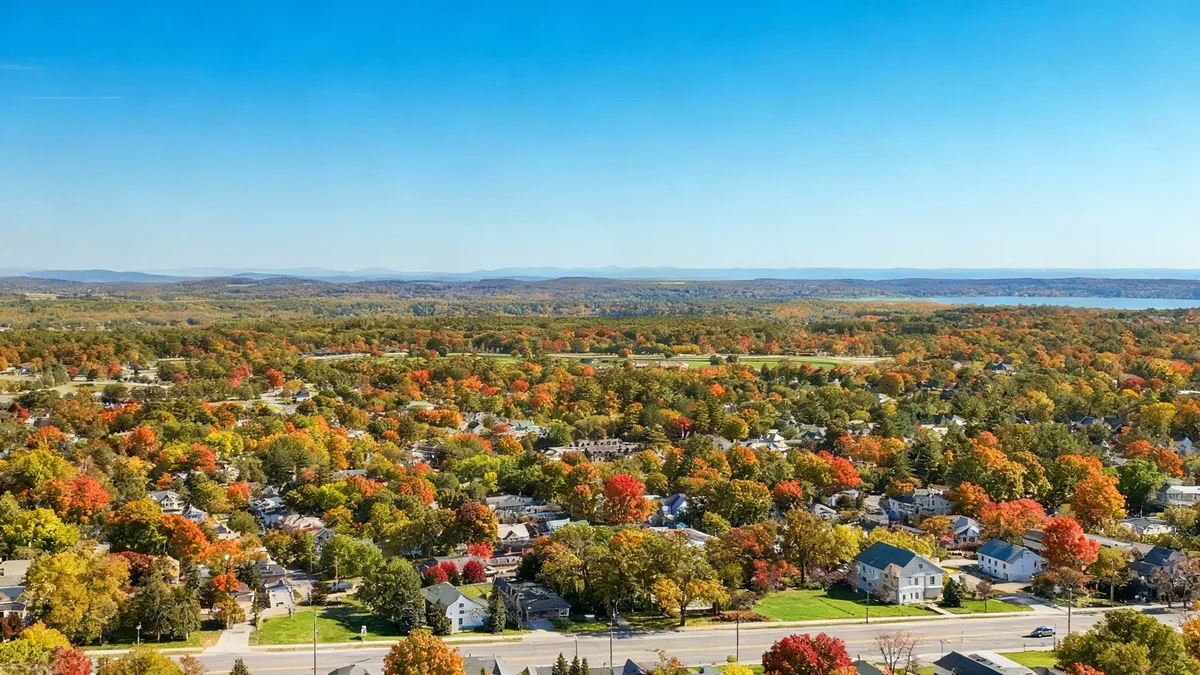Alexandria Real Estate Equities, Inc. (ARE) is demonstrating notable performance in a life science real estate market facing significant challenges. While the broader U.S. sector contends with vacancy rates approaching 24%, Alexandria maintains strong leasing activity and projects high occupancy for its specialized properties through the end of the year.
The company's strategy, centered on large, amenity-rich 'mega-campuses,' continues to attract and retain major tenants. This approach has allowed it to secure substantial leases and maintain positive financial metrics even as the industry navigates a period of oversupply and slower demand.
Key Takeaways
- The U.S. life science real estate market vacancy rate reached 23.9% in the second quarter, an increase of 5.2 percentage points year-over-year.
- Alexandria Real Estate leased 770,000 square feet in the second quarter and anticipates year-end occupancy between 91% and 92.5%.
- The company recently secured its largest-ever lease: a 16-year, 466,000-square-foot agreement at its San Diego campus.
- Long-term industry growth is supported by projected 7.4% annual growth in global pharmaceutical sales and a surge in AI-related spending in life sciences.
A Challenging Market for Life Science Real Estate
The real estate sector that supports biotechnology and life sciences is currently navigating a difficult period. After a boom fueled by the pandemic, the market is now characterized by an oversupply of space and softer demand from tenants.
This has resulted in a sharp increase in vacancies across major hubs. According to a report from Cushman & Wakefield, the national vacancy rate for life science properties climbed to 23.9% in the second quarter. This represents a significant jump of 520 basis points, or 5.2 percentage points, from the same period a year prior.
The influx of new construction completed without tenants already in place has contributed to this trend. In response, developers are shifting their focus from speculative projects to build-to-suit facilities, which are less risky but often less profitable.
From Boom to Oversupply
The period following the 2008 financial crisis saw a prolonged era of low interest rates, which fueled a real estate boom across many sectors. The COVID-19 pandemic further accelerated investment in life science properties, leading to a wave of new development. However, recent interest rate hikes and shifts in capital availability have cooled the market, leaving a surplus of available space.
Alexandria's Performance Amidst Industry Headwinds
Despite the challenging market conditions, Alexandria Real Estate Equities has managed to maintain strong operational performance. The company's focus on high-quality, collaborative campus environments appears to be a key differentiator.
In its second-quarter earnings report, Alexandria announced it had leased 770,000 square feet of space. Management also reported positive leasing spreads, indicating that new rental agreements were signed at higher rates than expiring ones. This performance stands in stark contrast to the broader market's struggles.
A significant highlight of the company's recent activity was a landmark lease signed at its San Diego mega-campus. The agreement, which spans 16 years, is for 466,000 square feet, making it the largest single lease in Alexandria's more than 30-year history. This transaction provides a major anchor tenant for a new 1.2 million-square-foot development in the region.
Occupancy Defies Market Norms
While the national life science vacancy rate hovers near 24%, Alexandria projects its own portfolio will end the year with an occupancy rate between 91% and 92.5%. This significant gap highlights the company's ability to attract and retain tenants in its specialized facilities.
Strategic Asset Management
Alexandria has also been actively managing its portfolio to adapt to the current economic climate. The company is in the process of selling approximately $1.1 billion in assets. This strategy allows it to dispose of smaller, individual properties to fund the development of its larger mega-campus projects.
Furthermore, the company has maintained efficiency in its operations. General and administrative (G&A) costs were reported at just 6.3% of net operating income (NOI), demonstrating disciplined cost control.
The mega-campus model is designed to create a 'hive effect,' where innovative companies are attracted by the proximity to other top-tier intellectual capital, fostering collaboration and growth.
Future Growth Drivers for the Sector
While the current market is turbulent, long-term trends suggest a positive outlook for the life science industry. These future tailwinds are expected to drive sustained demand for specialized real estate, benefiting established players like Alexandria.
One major driver is the projected growth in global pharmaceutical sales. Research from Cushman & Wakefield forecasts that sales will grow at an annual rate of 7.4% through the end of this decade. This expansion will require more research and development facilities.
The Impact of Artificial Intelligence
Another significant factor is the increasing integration of artificial intelligence (AI) into the life sciences. AI is being leveraged to accelerate drug discovery, improve clinical trials, and increase overall efficiency in research.
This technological shift is expected to fuel demand for advanced, industrialized lab space that can support automated processes. Spending on AI in the sector is projected to grow substantially:
- $3 billion in the current year.
- Accelerating to $16.5 billion by 2034.
As a leading developer and operator of life science facilities, Alexandria is well-positioned to meet this emerging demand for technologically advanced real estate.
The company's established brand and deep relationships with public and private life science companies provide a competitive advantage in a market that, despite its current challenges, holds significant potential for future growth.





